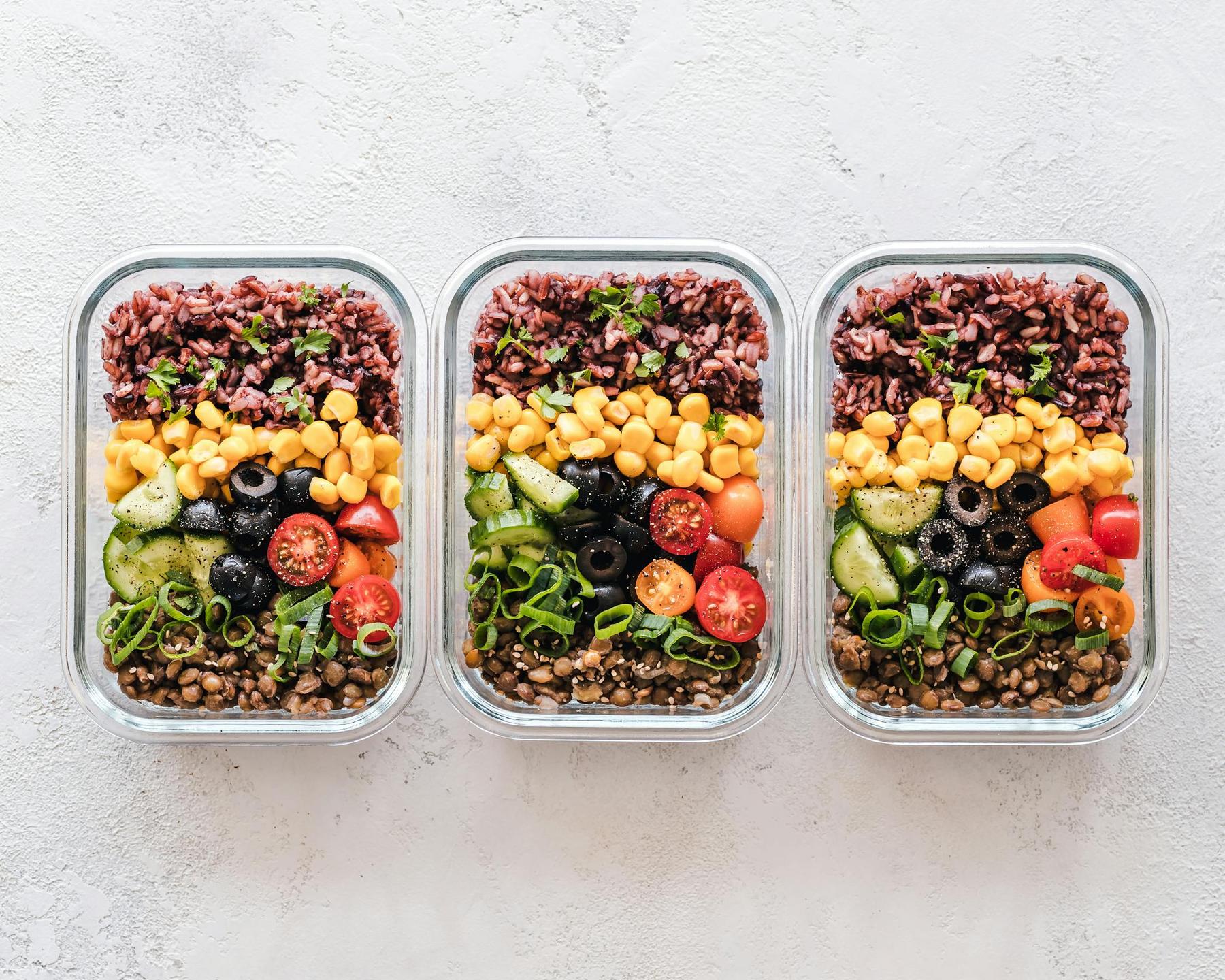In the ever-evolving landscape of nutrition and weight management, meal replacement shakes have emerged as a popular tool for those seeking convenient solutions to dietary challenges. As we navigate through 2025, these formulated beverages promise nutritional completeness in a bottle—but do they deliver on this promise? For Australians considering these products as part of their health journey, understanding both their benefits and limitations is crucial before incorporating them into your routine.
What Exactly Are Meal Replacement Shakes and How Do They Work?
Meal replacement shakes are formulated beverages designed to provide the nutrients of a complete meal while controlling calorie intake. Unlike protein shakes, which supplement specific nutrients, true meal replacements aim to deliver a balanced mix of macronutrients (proteins, carbohydrates, and fats) along with essential vitamins and minerals.
These products work primarily through portion control and nutritional standardisation. By replacing one or two daily meals with a shake containing a precise calorie count (typically 200-400 calories), they create a predictable caloric deficit while theoretically maintaining nutritional adequacy. This structured approach removes guesswork from meal planning and helps establish a consistent energy intake pattern.
The effectiveness of meal replacement shakes stems from this simplified nutritional framework. By reducing decision fatigue around food choices and eliminating the preparation of traditional meals, they address both psychological and practical barriers to dietary adherence.
What Benefits Do Meal Replacement Shakes Offer for Weight Management?
When incorporated appropriately, meal replacement shakes can provide several advantages for those pursuing weight management goals:
Effective Short-Term Weight Loss
Research demonstrates that replacing 1-2 daily meals with formulated shakes can lead to meaningful weight reduction. Studies show participants using meal replacements lost up to 2.4 kg more over three months compared to those following traditional reduced-calorie diets. This approach appears particularly beneficial for individuals with type 2 diabetes, as it improves not only weight metrics but also blood sugar control and cholesterol profiles.
The standardised portions and clear caloric boundaries of these products create a structured framework that helps prevent unconscious overeating—a common challenge with conventional dieting approaches.
Convenience and Accessibility
Perhaps the most compelling advantage of meal replacement shakes is their convenience. In our time-pressed society, these ready-to-consume options eliminate meal preparation, cooking, and cleanup. For busy professionals, parents, or those with limited cooking facilities, this time-saving benefit can be significant.
The portable nature of these products also facilitates dietary consistency during travel, work commitments, or other situations where accessing nutritious meals might prove challenging. This accessibility removes common barriers to maintaining nutritional goals during hectic periods.
Nutritional Structure and Satiety Support
Quality meal replacement formulations provide balanced ratios of macronutrients along with essential micronutrients, ensuring baseline nutritional intake even during caloric restriction. The higher protein content of modern formulations (typically 20-30g per serving) supports muscle preservation during weight loss while promoting fullness.
Many premium options also incorporate dietary fibre, which extends satiety and helps regulate appetite between meals. This hunger management component is crucial for adherence, as it reduces the temptation to abandon planned dietary patterns due to uncomfortable hunger sensations.
What Are the Limitations and Concerns With Meal Replacement Shakes?
Despite their advantages, meal replacement shakes present several significant drawbacks that warrant careful consideration:
Nutritional Complexity and Completeness Issues
While manufacturers strive to create comprehensive formulations, meal replacement shakes cannot fully replicate the nutritional complexity of whole foods. They typically lack the full spectrum of phytonutrients, antioxidants, enzymes, and beneficial compounds found in unprocessed foods.
The synthetic vitamins and minerals in these products may not be absorbed or utilised as effectively as those from natural food sources. Many formulations also provide inadequate dietary fibre, potentially leading to digestive discomfort, constipation, and disruptions to gut microbiome health over time.
Ingredient Quality and Processing Concerns
Examining the ingredient lists of many commercial meal replacements reveals potential concerns:
- Artificial sweeteners, flavours, and preservatives
- Added sugars (often disguised as dextrose, maltodextrin, or corn syrup)
- Highly processed protein isolates
- Potential allergens like dairy, soy, or gluten
- Stabilisers and thickeners with unknown long-term effects
These processed components may compromise metabolic health with extended use, particularly for individuals with existing digestive sensitivities or inflammatory conditions.
Sustainability Challenges and Weight Regain
Perhaps the most significant limitation is sustainability. Research indicates that up to 80% of users regain lost weight after discontinuing meal replacement programs. This rebound effect stems from several factors:
- Failure to develop lasting eating habits during the shake-based regimen
- Inadequate education about transitioning to whole-food-based patterns
- Psychological dependence on the simplicity of liquid nutrition
- Lack of skills for preparing balanced meals independently
Without a structured transition plan and sustainable eating habits, the short-term benefits may quickly reverse once normal eating patterns resume.
Social and Financial Implications
The social dimension of meal replacement use deserves consideration. Regular participation in social dining experiences becomes complicated when adhering to a shake-based regimen. This restriction can lead to social isolation or dietary inconsistency during social events.
Financially, meal replacements represent a significant ongoing expense. With costs ranging from $2-$5 per serving, replacing two daily meals equates to $60-$150 monthly—substantially more than whole-food alternatives with equivalent nutritional value.
How Can Meal Replacement Shakes Be Used Safely and Effectively?
For those considering meal replacement shakes, the following framework provides guidance for their appropriate implementation:
Key Considerations for Safe Meal Replacement Use
| Factor | Recommendation | Rationale |
|---|---|---|
| Duration | Limit to 12 weeks maximum unless medically supervised | Prevents nutritional deficiencies and psychological dependence |
| Medical Oversight | Required for individuals with BMI ≥27, diabetes, or existing nutrient deficiencies | Ensures appropriate monitoring of health markers and adjustment as needed |
| Meal Frequency | Replace maximum of 1-2 meals daily, not all three | Maintains exposure to whole-food nutrition and normal eating patterns |
| Product Selection | Choose options with ≥20g protein, 3g+ fibre, no artificial additives | Optimises satiety, digestive health, and overall nutritional quality |
| Complementary Habits | Incorporate behavioural coaching and whole-food education | Builds foundation for sustainable results beyond the shake period |
Integration with Comprehensive Weight Management
Meal replacement shakes yield optimal results when positioned as one component within a holistic approach to weight management. Rather than viewing them as a standalone solution, they function best as:
- A short-term intervention to create initial momentum
- A transitional tool while developing cooking skills and nutritional knowledge
- A strategic option for specific high-challenge situations (travel, extremely busy periods)
- A supplement to professionally-designed nutritional programs
Medical weight management services like those offered by Australian telehealth providers can effectively incorporate meal replacements within structured programs that address the broader physiological and behavioural aspects of weight regulation.
Who Should Consider Professional Support When Using Meal Replacement Shakes?
While meal replacements may seem straightforward, certain populations benefit substantially from professional guidance:
- Individuals with BMI ≥27 or obesity-related health conditions
- Those with a history of disordered eating patterns
- People with diabetes or metabolic syndrome
- Individuals taking medications that interact with nutritional status
- Anyone planning extended use beyond the recommended 12-week window
For these groups, healthcare-supervised programs provide crucial monitoring, personalisation, and support to maximise benefits while minimising risks. These services typically include body composition analysis, metabolic marker tracking, and behavioural coaching—components that significantly enhance outcomes compared to self-directed approaches.
Achieving Sustainable Results: Beyond Meal Replacements
The evidence consistently shows that lasting weight management success requires transitioning from meal replacements to sustainable dietary patterns. Professional weight management programs facilitate this transition through:
- Gradual reintroduction of whole-food meals with appropriate portions
- Development of practical cooking skills for nutritious meal preparation
- Establishment of flexible eating strategies for various life circumstances
- Ongoing support during the vulnerable transition period
This structured approach bridges the gap between the initial benefits of meal replacements and the long-term sustainability of whole-food nutrition, addressing the fundamental limitation of shake-only approaches.
Are meal replacement shakes effective for long-term weight loss?
Meal replacement shakes can be effective for initial weight reduction, with studies showing they may produce 2.4 kg more weight loss over three months compared to conventional diets. However, their long-term effectiveness depends on transitioning to sustainable eating patterns. Without this transition, approximately 80% of users regain lost weight. For lasting results, meal replacements work best as a temporary tool within a comprehensive approach that includes behavioural changes and gradual adoption of nutritious whole-food meals.
How do I choose a high-quality meal replacement shake?
Select meal replacement products that contain at least 20 grams of protein per serving, a minimum of 3 grams of fibre, and comprehensive vitamin/mineral profiles meeting 25-35% of daily requirements. Avoid formulations containing artificial sweeteners, flavours, and preservatives. The ingredient list should be short and feature recognisable components. Products specifically formulated for medical weight management typically offer superior nutritional profiles, though they may require healthcare provider supervision.
Can meal replacement shakes cause nutritional deficiencies?
When used exclusively or for extended periods without professional oversight, meal replacement shakes may lead to nutritional gaps. While they provide essential macronutrients and basic vitamins and minerals, they typically lack the full spectrum of phytonutrients, enzymes, and beneficial compounds found in whole foods. To prevent deficiencies, limit use to 1-2 meals daily for a maximum of 12 weeks unless medically supervised, and ensure your remaining meals contain diverse, nutrient-dense whole foods.
How should I transition from meal replacements back to regular eating?
Successful transition requires a gradual approach over 4-6 weeks. Begin by replacing one shake with a nutritionally balanced meal while maintaining the second replacement. Focus on meals with similar macronutrient proportions to your shake (adequate protein, moderate carbohydrates, healthy fats). After 1-2 weeks, replace the second shake while maintaining consistent portion sizes and meal timing. Throughout this process, continue monitoring weight and adjusting portions as needed. Professional guidance during this critical transition phase can significantly improve long-term success rates.
Are meal replacement shakes suitable for people with diabetes?
Research indicates meal replacement shakes may benefit individuals with type 2 diabetes when used appropriately. Studies show improvements in blood glucose control and weight metrics when implemented under medical supervision. Diabetic individuals should only use products specifically formulated for blood sugar management and must consult healthcare providers before starting any meal replacement regimen. Ongoing monitoring of glucose levels is essential, as medication adjustments may be necessary as weight changes occur.



